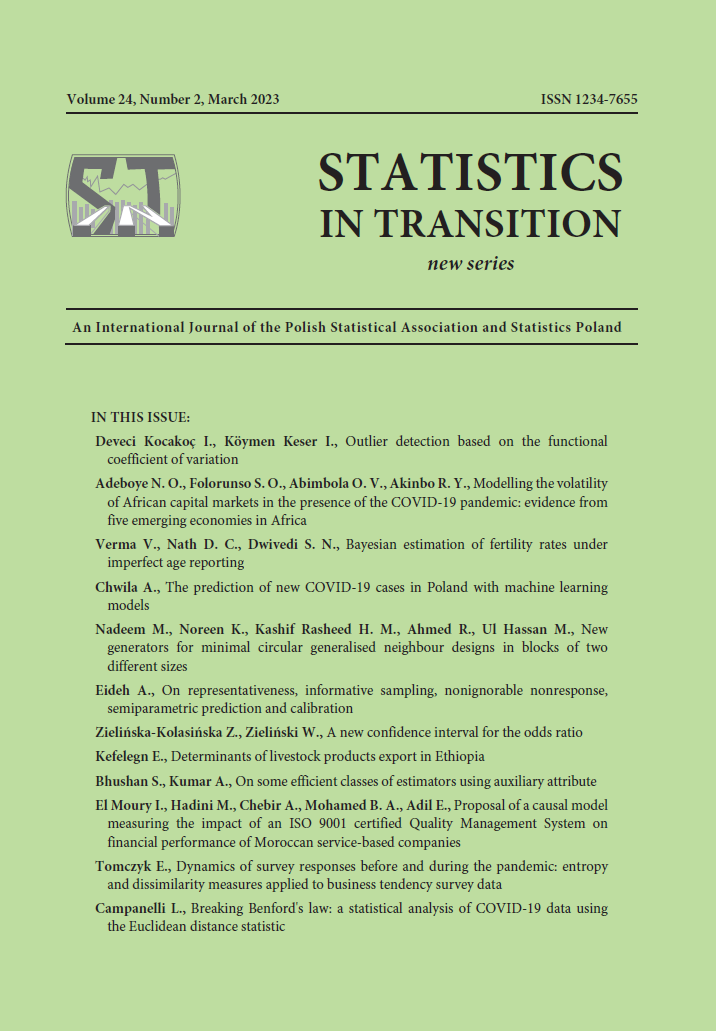Bayesian estimation of fertility rates under imperfect age
reporting
Bayesian estimation of fertility rates under imperfect age
reporting
Author(s): Vivek Verma, Dilip C. Nath, S. N. DwivediSubject(s): National Economy, Socio-Economic Research
Published by: Główny Urząd Statystyczny
Keywords: Fisher information; square error loss function; age-specific marital fertility rate; Bayes estimator; maximum likelihood principle
Summary/Abstract: This article outlines the application of the Bayesian method of parameter estimation to situations where the probability of age misreporting is high, leading to transfers of an individual from one age group to another. An essential requirement for Bayesian estimation is prior distribution, derived for both perfect and imperfect age reporting. As an alternative to the Bayesian methodology, a classical estimator based on the maximum likelihood principle has also been discussed. Here, the age misreporting probability matrix has been constructed using a performance indicator, which incorporates the relative performance of estimators based on age when reported correctly instead of misreporting. The initial guess of performance indicators can either be empirically or theoretically derived. The method has been illustrated by using data on Empowered Action Group (EAG) states of India from National Family Health Survey-3 (2005–2006) to estimate the total marital fertility rates. The present study reveals through both a simulation and real-life set-up that the Bayesian estimation method has been more promising and reliable in estimating fertility rates, even in situations where age misreporting is higher than in case of classical maximum likelihood estimates.
Journal: Statistics in Transition. New Series
- Issue Year: 24/2023
- Issue No: 2
- Page Range: 39-57
- Page Count: 19
- Language: English

